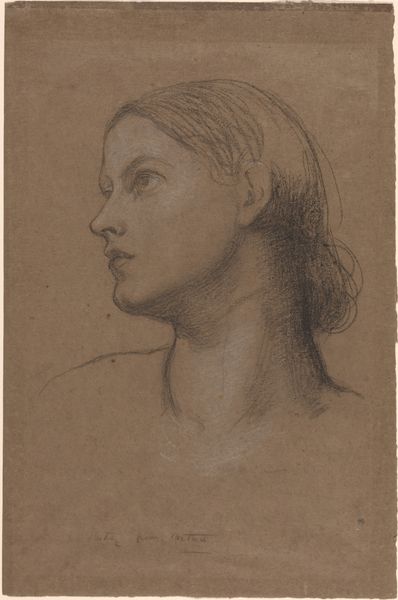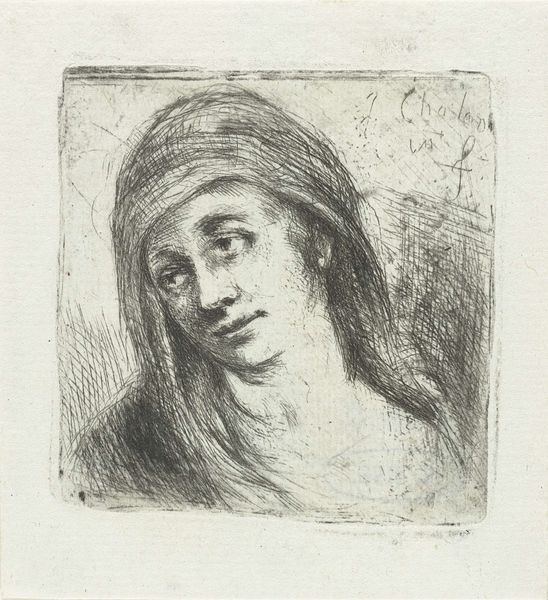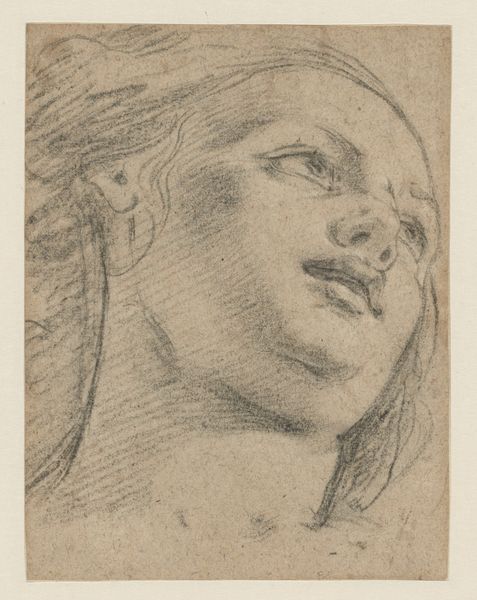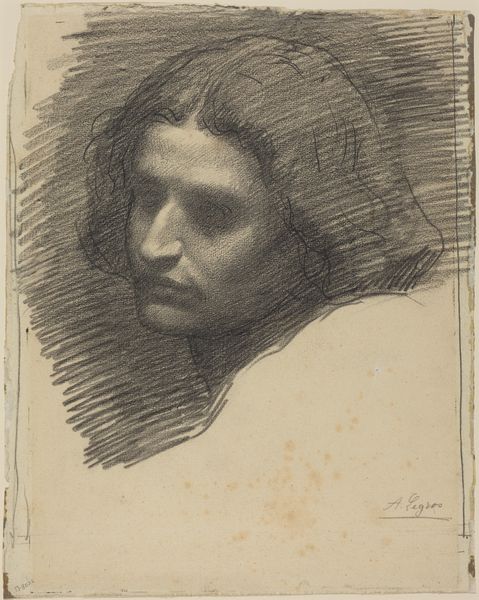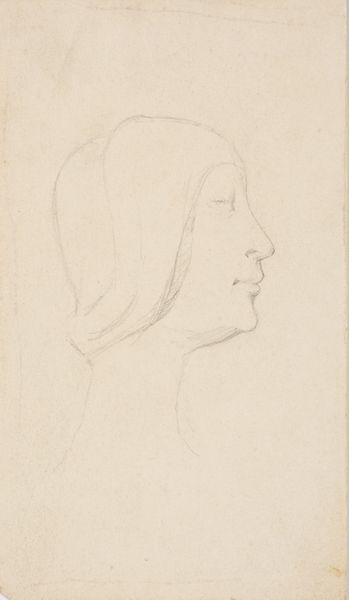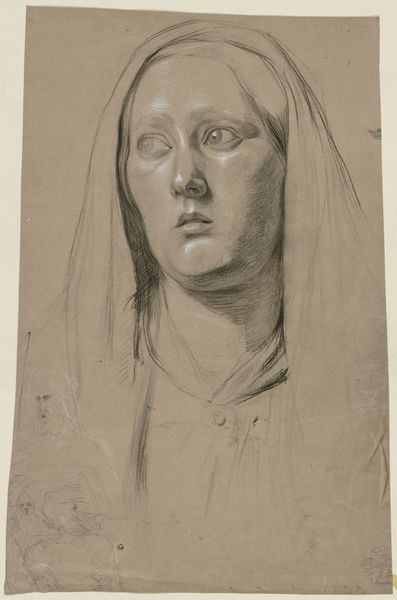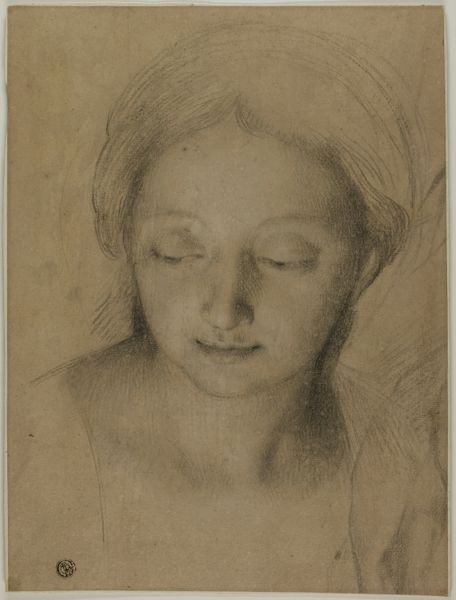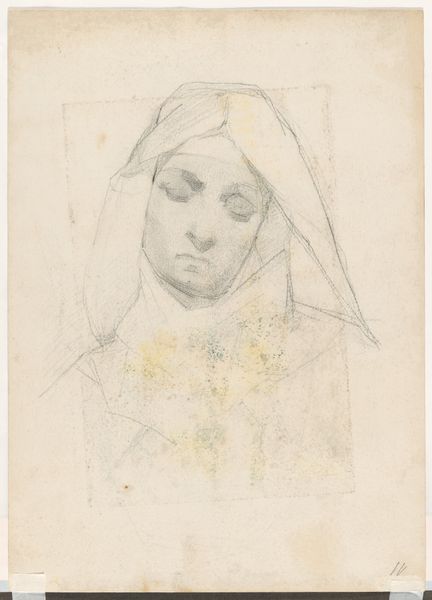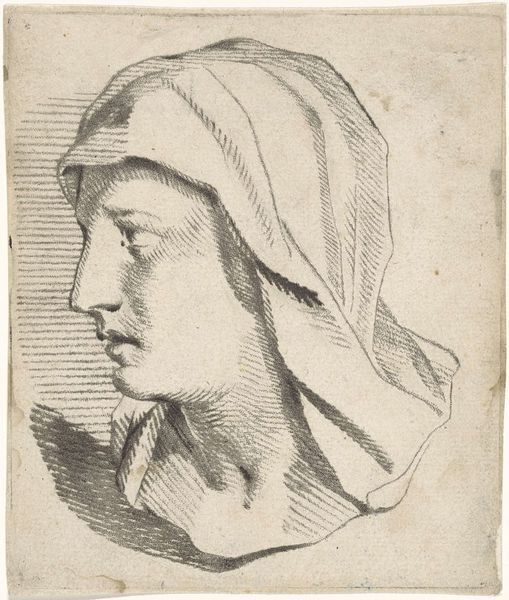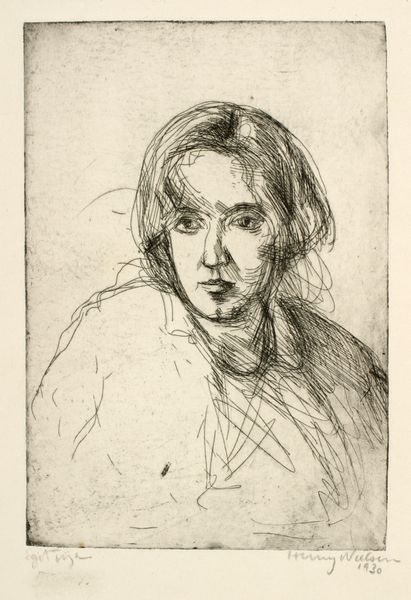
drawing, paper, pencil, chalk
#
portrait
#
pencil drawn
#
drawing
#
baroque
#
paper
#
pencil drawing
#
sketch
#
pencil
#
chalk
#
14_17th-century
#
portrait drawing
Copyright: Public Domain
Editor: This is Robert Nanteuil's "Eine Frau (Heilige_), emporblickend," a chalk and pencil drawing on paper from the 17th century. I'm struck by the directness and simplicity of it. What do you see in this drawing? Curator: Well, looking at it materially, the roughness of the paper and the visible marks of the chalk and pencil aren’t just incidental. They become integral to the meaning. Nanteuil’s choice of these readily available, almost utilitarian materials brings into question the typical reverence associated with religious portraiture. Editor: So, you're saying the choice of a simple drawing elevates and democratizes, or subverts... something? What sort of labor went into its making, relative to other art forms during that time? Curator: Precisely! The drawing is a quick method of manufacture and is immediate. Compared to, say, an oil painting, which required more specialized labor and expensive materials like pigments and canvases controlled by guilds. Consider the social status implied here: drawing could be a more accessible skill. Does that give you further insight? Editor: It’s almost a challenge to the more formalized and exclusive methods. So, if portraiture, especially of a "holy woman", was usually the domain of wealth and patronage, what's happening here? Curator: Think about the dissemination of ideas during the 17th century, with the rise of printmaking. Drawings like these could function as preparatory sketches for prints, thus participating in a larger circuit of production and consumption, a democratizing factor allowing for a broader audience, moving the focus away from the rarified object to one embedded in a web of material processes. Editor: That's really interesting! It makes you think about who had access to the image and how it was used. Curator: Exactly! The materials and methods tell a very different story about the social and economic life of art production. Editor: I never considered it that way! Now I'm seeing so much more depth here.
Comments
No comments
Be the first to comment and join the conversation on the ultimate creative platform.
